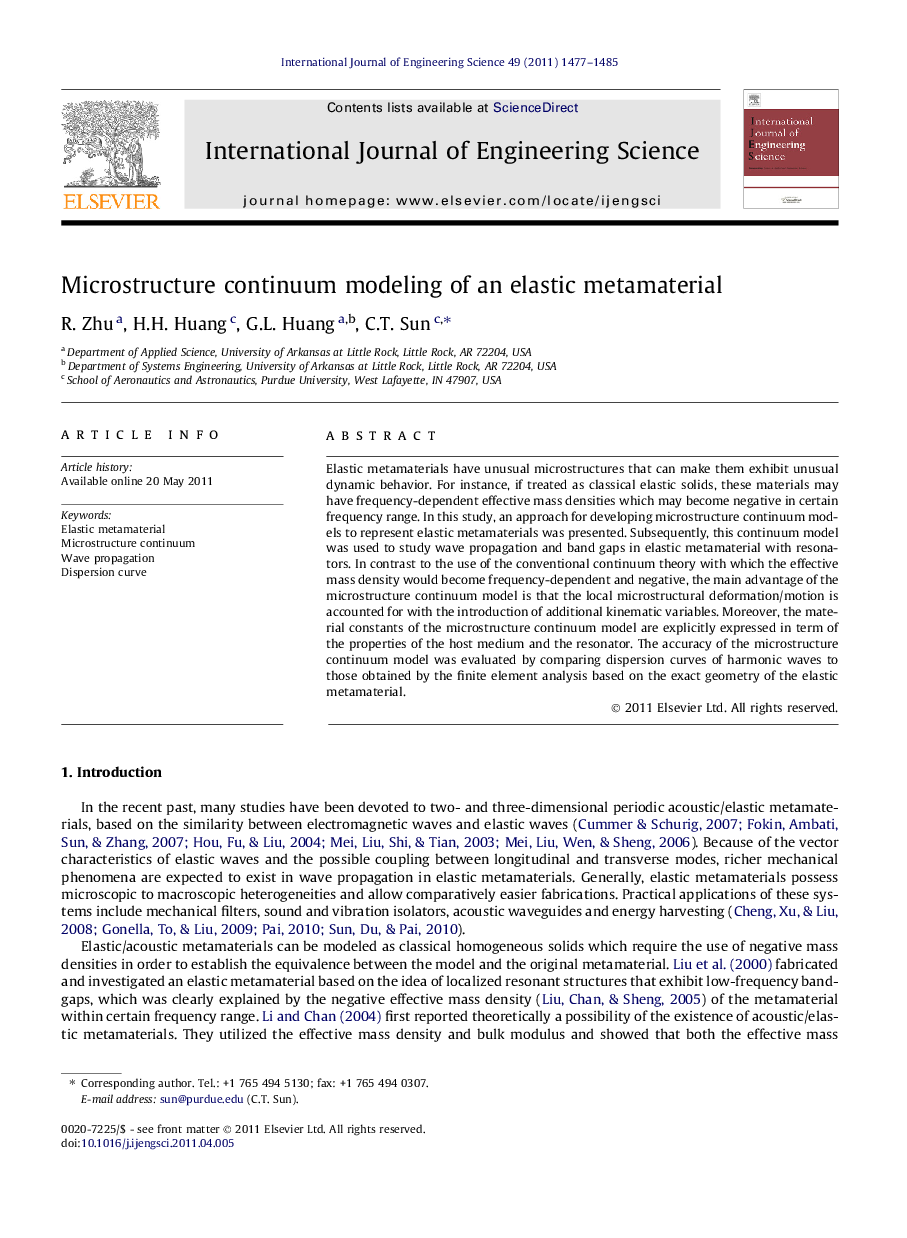| Article ID | Journal | Published Year | Pages | File Type |
|---|---|---|---|---|
| 825236 | International Journal of Engineering Science | 2011 | 9 Pages |
Elastic metamaterials have unusual microstructures that can make them exhibit unusual dynamic behavior. For instance, if treated as classical elastic solids, these materials may have frequency-dependent effective mass densities which may become negative in certain frequency range. In this study, an approach for developing microstructure continuum models to represent elastic metamaterials was presented. Subsequently, this continuum model was used to study wave propagation and band gaps in elastic metamaterial with resonators. In contrast to the use of the conventional continuum theory with which the effective mass density would become frequency-dependent and negative, the main advantage of the microstructure continuum model is that the local microstructural deformation/motion is accounted for with the introduction of additional kinematic variables. Moreover, the material constants of the microstructure continuum model are explicitly expressed in term of the properties of the host medium and the resonator. The accuracy of the microstructure continuum model was evaluated by comparing dispersion curves of harmonic waves to those obtained by the finite element analysis based on the exact geometry of the elastic metamaterial.
